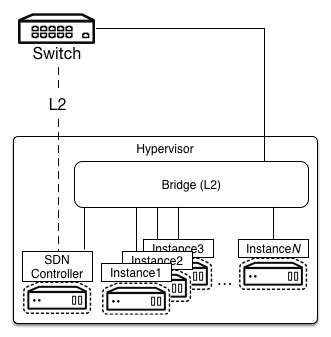- Moved RST guide to the arch-design folder - Deleted XML files - Updated scripts Change-Id: Id0e38a9cada9dd75cb9c8f3bd2d88ce2f4fd3eac Implements: blueprint archguide-mitaka-rst
1.6 KiB
Software-defined networking
Software-defined networking (SDN) is the separation of the data plane and control plane. SDN is a popular method of managing and controlling packet flows within networks. SDN uses overlays or directly controlled layer-2 devices to determine flow paths, and as such presents challenges to a cloud environment. Some designers may wish to run their controllers within an OpenStack installation. Others may wish to have their installations participate in an SDN-controlled network.
Challenges
SDN is a relatively new concept that is not yet standardized, so SDN systems come in a variety of different implementations. Because of this, a truly prescriptive architecture is not feasible. Instead, examine the differences between an existing and a planned OpenStack design and determine where potential conflicts and gaps exist.
Possible solutions
If an SDN implementation requires layer-2 access because it directly manipulates switches, we do not recommend running an overlay network or a layer-3 agent. If the controller resides within an OpenStack installation, it may be necessary to build an ML2 plug-in and schedule the controller instances to connect to tenant VLANs that they can talk directly to the switch hardware. Alternatively, depending on the external device support, use a tunnel that terminates at the switch hardware itself.
Diagram
OpenStack hosted SDN controller:

OpenStack participating in an SDN controller network:
